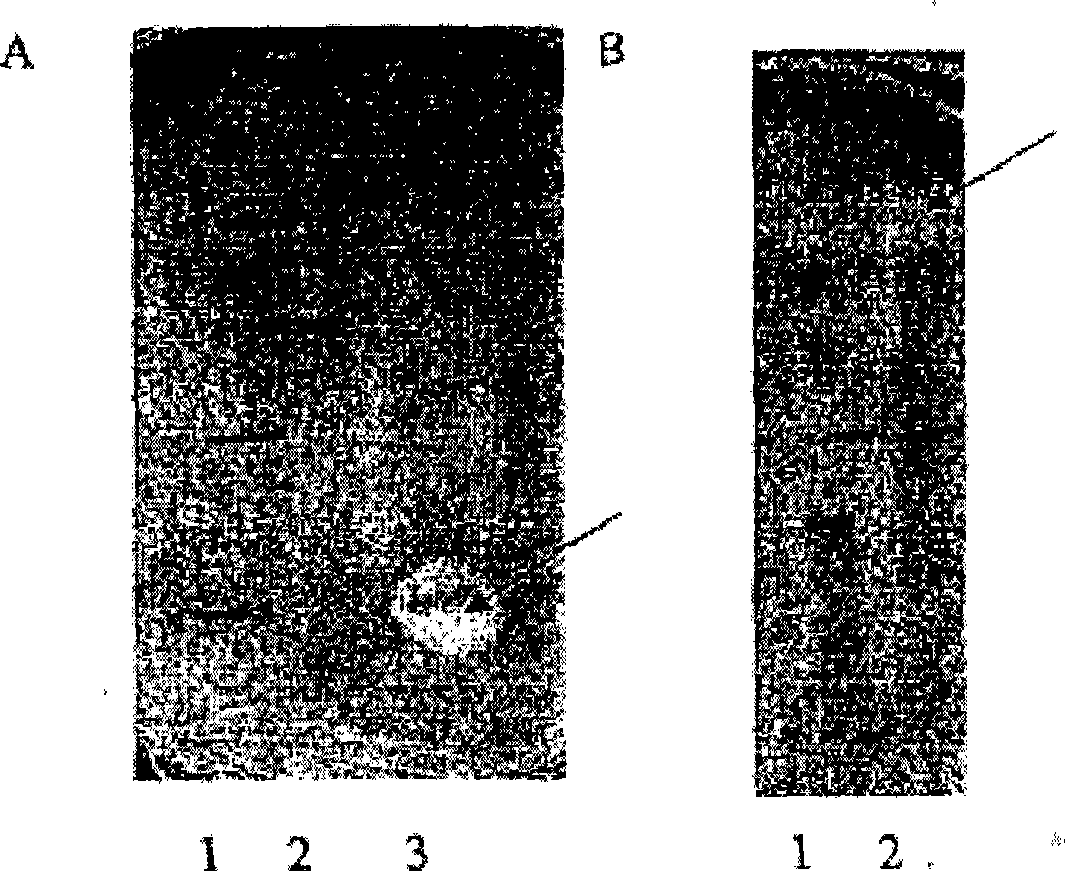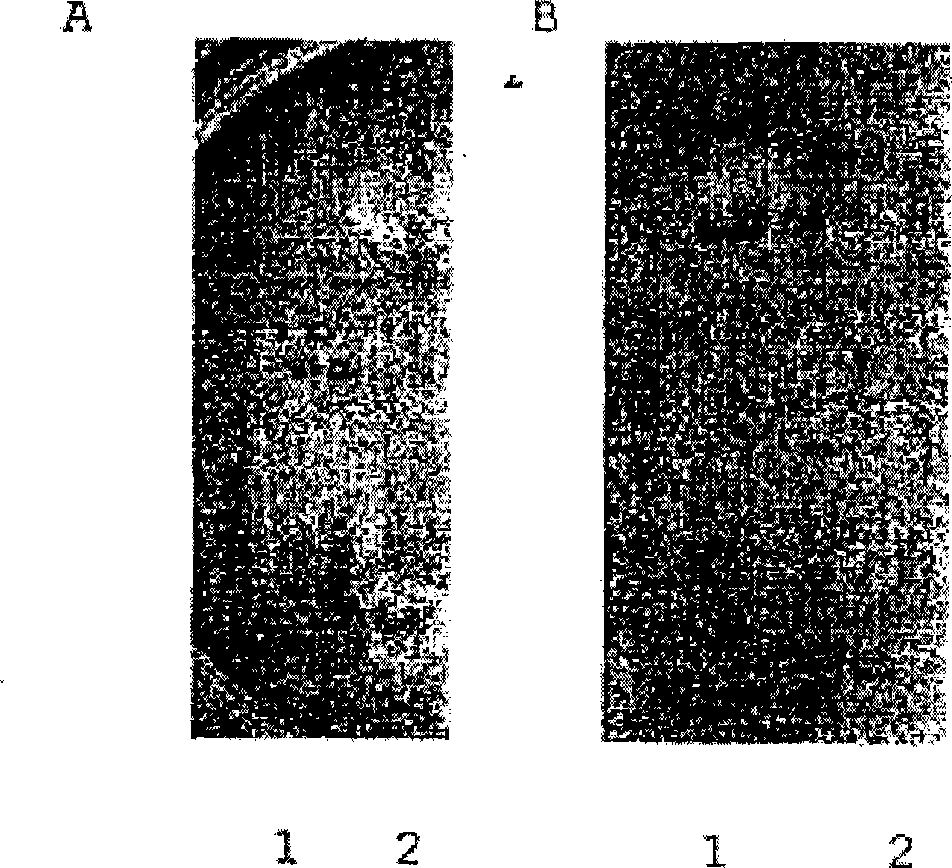Novel enterococcus and streptococcus strains and bacteriocins
A technology of bacteriocin and streptococci, applied in inducer strains of Lactococcus, diseases in poultry, application fields of therapeutic compositions, can solve problems such as difficult adjustment of immune response
- Summary
- Abstract
- Description
- Claims
- Application Information
AI Technical Summary
Problems solved by technology
Method used
Image
Examples
Embodiment 1
[0056] Two novel antagonistic strains, Enterococcus faecium strain 50-52 (NRRL B-30746) and Streptococcus hamster strain 760 (NRRL B-30745), isolated from the mucosal surface of caecum of approximately 1.0 g of broiler chickens, were suspended in Add about 10 ml of sterile 0.85% (w / v) saline solution (physiological saline) and heat to about 80°C for about 15 minutes. About 0.10 ml of the about 1:50 and 1:2500 suspensions were spread onto plate count agar or MRS agar. The plates were incubated at about 37°C for about 24 hours under microaerobic conditions. Colonies with different morphologies were streaked on MRS agar. These cultures were incubated at about 37°C for about 24 hours under microaerobic conditions.
[0057] Strain 760 was grown on MRS agar at about 37°C for about 24 hours. The strains are facultative aerobes and Gram-positive cocci which can grow between about 37°C and 45°C. The strain grows on nutrient agar or plate count agar and after about 24 hours of aerob...
Embodiment 2
[0060] Crude antimicrobial preparations were extracted from cultures of two antagonistic strains: Enterococcus 50-52 and Streptococcus 760. The antagonist was incubated aerobically with the inducer strain L. lactis strain 320 (NRRL B-30744, supra) in about 250 ml of 10% Brucella broth for about 14 hours at 37°C. The concentration of the producer strain was about 106 CFU / mL and the inducer strain was about 10 7 CFU / mL. The resulting culture was centrifuged at about 2,500 xg for about 10 minutes to remove most of the viable cells. The decanted supernatant was mixed with about 60% saturated ammonium sulfate and incubated at about 4°C for about 24 hours to precipitate the bacteriocin compounds. After centrifugation at about 10,000 xg for about 20 minutes, the pellet was resuspended in about 1.5 ml of about 10 mM sodium phosphate buffer, pH about 7.0, and dialyzed overnight against about 2.5 L of the same buffer. The resulting solution was referred to as crude antimicrobial prep...
Embodiment 3
[0061] The antimicrobial spectrum of the CAPs was determined using a spot test. About 1 ml of the sterilized crude antimicrobial preparation (CAP) obtained in Example 2 above was diluted with about 1 ml of phosphate-sodium salt buffer (pH about 7.0) and sterilized as in Example 2. About 10 microliters of each sample was plated onto blood-supplemented Campylobacter agar or nutrient agar (MPA or Meta-Peptone Agar) pre-inoculated with cells of the bacteria of interest. Plates containing Campylobacter jejuni were grown under microaerobic conditions at about 42°C, and Y.enterocolitica and Y.pseudotuberculosis were cultured aerobically at about 28°C. ), other bacterial strains were incubated aerobically at about 37°C for about 24 or 48 hours. Identification is based on regions of inhibition produced by the target bacteria. CAP activity is expressed in arbitrary units (AU) per milliliter of preparation where a visible region of culture growth inhibition occurs (Henderson et al., Ar...
PUM
 Login to View More
Login to View More Abstract
Description
Claims
Application Information
 Login to View More
Login to View More - R&D
- Intellectual Property
- Life Sciences
- Materials
- Tech Scout
- Unparalleled Data Quality
- Higher Quality Content
- 60% Fewer Hallucinations
Browse by: Latest US Patents, China's latest patents, Technical Efficacy Thesaurus, Application Domain, Technology Topic, Popular Technical Reports.
© 2025 PatSnap. All rights reserved.Legal|Privacy policy|Modern Slavery Act Transparency Statement|Sitemap|About US| Contact US: help@patsnap.com



